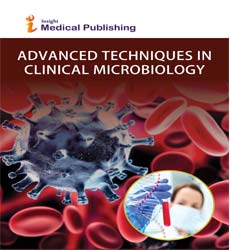Effect of Transmissible Disease in Human Body and Examples of Transmissible Diseases
Introduction
Infectious diseases, also known as infectious diseases or transmissible diseases, are illnesses caused by the infection, presence, and proliferation of pathogenic (disease-causing) biologic agents in a single human or animal host. Infections can be asymptomatic (meaning they cause no symptoms) or severe and lethal. The term disease broadly refers to any condition that impairs the normal functioning of the body. For this reason, diseases are associated with the dysfunction of the body's normal homeostatic processes [1]. The term infection does not have the same connotation as it does in the medical world. Viruses, bacteria, fungus, protozoa, multicellular parasites, and prions are examples of disease-causing biologic agents. Direct physical contact with an infectious individual, consumption of contaminated foods or beverages, contact with contaminated body fluids, contact with contaminated inanimate items, and other methods of transmission are all possible. The terms illness and sickness are both generally used as synonyms for disease; however, the term illness is occasionally used to refer specifically to the patient's personal experience of his or her disease [2].
Contact with infected surfaces or objects (Norovirus), contaminated food (Salmonella, E. coli), contaminated blood (HIV, hepatitis B), or polluted water (HIV, hepatitis B) (botulism). Symptoms of illness are often not directly the result of infection, but a collection of evolved responses – sickness behaviour by the body – that helps clear infection and promote recovery. Such aspects of illness can include lethargy, depression, loss of appetite, sleepiness, hyperalgesia, and inability to concentrate [3].
Malaria is spread via insect or animal bites (Malaria is spread by mosquitos). In the last two centuries, considerable progress has been made in the control of infectious diseases. Many communicable diseases in Northern Ireland have been dramatically reduced and irradiated as a result of simple measures such as improved sanitation and food safety, as well as modern advances in antimicrobials and vaccination programmes; however, with the constant emergence of new organisms and diseases, it is imperative that these measures be maintained. Because infectious diseases have such a large influence on the community, monitoring and controlling them is a crucial aspect of maintaining public health. Cases of communicable disease must be reported in order to plan and evaluate disease preventive and control efforts, as well as to detect common-source epidemics one that has clinical consequences; in other words, the stage of the disease that produces the characteristic signs and symptoms of that disease [4]. Hepatitis A virus (HAV) is a communicable disease that is preventable through vaccination. It affects the liver causing jaundice. It is transmitted person-to-person through consumption of food, oral sexual contact, poor hand hygiene after using the bathroom or changing diapers, and water that is contaminated. It is one of the most reported outbreaks in the United States. It is self-limited after ingestion through contaminated food sources. The virus replicates in the liver, is excreted in bile, and can reach high concentrations in the stool. Social determinants of health are the social conditions in which people live that determine their health. Illnesses are generally related to social, economic, political, and environmental circumstances. Social determinants of health have been recognized by several health organizations such as the Public Health Agency of Canada and the World Health Organization to greatly influence collective and personal wellbeing. The World Health Organization's Social Determinants Council also recognizes Social determinants of health in poverty. Experts variously ascribed the disease to heredity, a sedentary lifestyle, depressed mood, and overindulgence in sex, rich food, or alcohol, all of which were social ills at the time.
References
1 Whinney MI (1987) Health and disease: problems of definition. CMAJ 136(8): 815.
2 Hart BL (1988) Biological basis of the behavior of sick animals. Neurosci Biobehav Rev 12(2): 123-137.
3 Elsevier (2009) A stage in the history of a pathological condition that begins with anatomical or physiological changes that are sufficient to produce recognizable signs and symptoms of a disease. Clinical Disease 39:274-275.
4 Stuart J (2002) Bathsheba's breast: women, cancer & history. Baltimore: The Johns Hopkins University Press pp. 168-170.
Abstract
Romain James*
Department of Rare Diseases Research, Institute of Medical Sciences, Brazil
*Corresponding author:
Romain James
Department of Rare Diseases Research, Institute of Medical Sciences, Brazil
E-mail: Romain123@desc.br
Received: August 08, 2021, Accepted: August 22, 2021, Published: August 30, 2021
Citation: James R (2021) Effect of Transmissible Disease in Human Body and Examples of Transmissible Diseases. Adv Tech Clin Microbiol. Vol.3 No.1:103
Open Access Journals
- Aquaculture & Veterinary Science
- Chemistry & Chemical Sciences
- Clinical Sciences
- Engineering
- General Science
- Genetics & Molecular Biology
- Health Care & Nursing
- Immunology & Microbiology
- Materials Science
- Mathematics & Physics
- Medical Sciences
- Neurology & Psychiatry
- Oncology & Cancer Science
- Pharmaceutical Sciences
